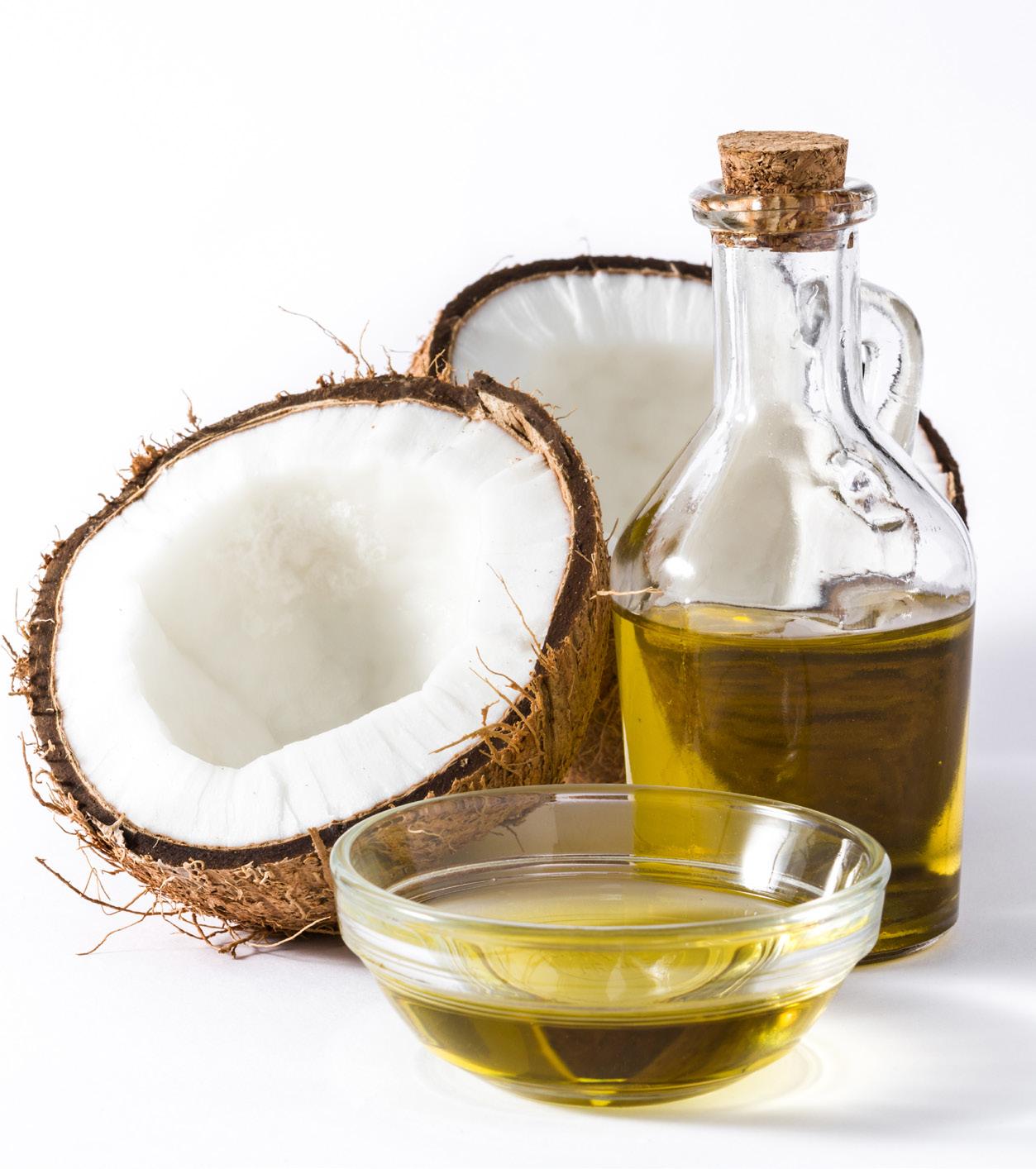
7 minute read
The Basic Fertility Evaluation
where or when his next meal was coming, feasting and then fasting, fasting, fasting while on the hunt for food. Dr. Jason Fung has a lot of good information on incorporating intermittent fasting into your lifestyle.
WHEN TO EAT: Eat infrequently, once per day is best. Intermittent fasting (or intermittent “feasting” as we refer to it) is highly recommended with Kitz’s Keto. This involves eating just one meal a day and allowing 12-24 hours between feedings. We are not herbivores. We’re not grazers.
We’re not meant to eat 3-5 meals a day with snacks in between, filling the gut with fiber and carbs that ferment and feed the bacteria and yeast causing more disease. It’s best to eat just before bedtime, giving your body time to rest and digest while you sleep.
Our bodies are well- designed to go without food, yet most of us consume excessive calories that add fat to our bodies. Fat is meant to be there to help ensure our survival. We are meant to survive famine and drought, going weeks without food and days without water.
HOW MUCH TO EAT: Abundance is bad. Even though you’re only eating one meal per day, portion control is still necessary. You will find that fatty meats are more filling than lean meats. You will likely feel full before you finish your meal.
EXERCISE: Intentional movement is key, but avoid highenergy and high-impact exercise. Activities like running create additional friction, heat, trauma, and damage in the body. We are meant to walk, take in the sites, but don’t run or churn away on the elliptical. Yoga is terrific. Tai Chi is as well. Slow movements accompanied by meditation and quiet thinking are great for your mind, body, and soul.
DR. ROB’S HOMEMADE ICE CREAM
WHAT TO EAT: Bacon, Eggs, Butter, Beef and Ice Cream. Stay very narrow in your selection of foods. Stay away from lean meats and try to choose grass-fed, all-natural meats. You want to consume fatty meats like a rib-eye steak, not lean, fat-free chicken breast. You need to eat the fat. By adding fat, cream, butter, and eggs, you reduce inflammation, you reduce your appetite, you reduce your glucose levels, and your energy is so much better. All of the bowel problems go away, the skin problems and the joint problems are gone. Minimize the variety and simplify your meals. Eliminate pasta, bread, yogurt, milk, seeds, and nuts. Plant oils which harden when exposed to oxygen likely contain a multitude of plant antigens, which are harmful.
WHAT TO DRINK: Water, Coffee, Tea Copious amounts of water are not required. Have a cup of coffee or tea with cream or butter and a glass of water (still or bubbly with no added sugar) when you need it. The whole 8 glasses of water a day suggestion is overkill. Avoid alcohol in all forms.
Note: (recipe can be halved to make smaller portion depending on capacity of your ice cream maker)
Ingredients • 2 pints Heavy Cream (no additives) • 2 Tablespoons of pure cane granulated sugar • 2 eggs (organic preferred) • 2 Tablespoons pure vanilla extract
Instructions Shake cream and pour into a large bowl. Add sugar, eggs, and vanilla extract. Whisk until well combined and frothy. Pour into ice cream machine and follow manufacturer’s directions.
The Ketogenic Food Plan
20%
What we choose to put into our bodies can create inflammation and dysfunction, or it can be a source of wellness and healing. The Ketogenic Food Plan (yes, it is more than just a diet) is about eating to experience life, love, energy, and abundance.
For years and years, most of us believed what we were being told by health professionals, nutritionist and dietitians. Fat is bad. Eat low-fat. Eat plenty of fruits and vegetables. But in treating infertility, we have discovered the opposite to be true.
The human body was built for survival, requiring fat and protein to provide the energy needed to bear the elements and go about the necessary functions of the day. The potential to eliminate our biggest health problems and concerns —including issues of fertility—has proven itself to be possible by going back to a basic diet, the one man first followed when he hunted the earth for sustenance. Increasing your saturated fat intake, limiting protein consumption, and significantly reducing (or eliminating) carbohydrates reduces inflammation throughout the body.
WHAT IS KETO? The ketogenic diet or “keto” is a high-fat, adequateprotein, low-to no-carbohydrate diet that results in an overall reduction of glucose in the blood stream. It was first created back in the 1920s and 1930s as a treatment for epilepsy and diabetes. It was developed as an alternative to fasting, which had demonstrated success in controlling seizures. The later advancement of medications that could effectively control epilepsy saw the diet abandoned,
but renewed interest in the mid-1990s sparked research into using it to treat other disorders,
80%
PROTEIN FAT
including heart disease, Parkinson’s, Alzheimer’s, ALS, diabetes, and a host of other medical conditions, including infertility.
We use the term “ketogenic” to represent ketones. Ketones are supposedly built when the body converts to burning fat instead of sugar. Dr. Kiltz believes we never burn glucose as fuel. Rather, we must convert sugar to fat for energy storage and the production of fatty acid short chain molecules to provide fuel for the mitochondria and thus ATP. ATP is the chemical energy produced by the mitochondria to keep the cells alive. Therefore, we are always burning fat (acetyl Co-A that comes from fatty acids) 24/7/365 regardless of what we’re eating.
Our bodies can either make fat by converting carbohydrates and amino acids in the liver via insulin, or use the animal fat we eat for fuel. Acetoacetate, beta-hydroxybutyrate, and acetone are ketone bodies that can be measured. People perceive the elevated level of ketone bodies in the blood to be evidence of our bodies replacing glucose as a fuel source, but the presence of ketone bodies is really just a reflection of lower glucose levels. Ketone levels appear to be higher when glucose levels are lower. It’s simply a matter of ratios.

For couples experiencing unexplained fertility, recurrent pregnancy loss, and repeated IVF failures, we believe immunologic dysfunction may be a root cause. One of the easiest ways of improving immunologic function is to reduce inflammation by eating fat.
Vegetables are sugar. Whole grains are sugar. It’s as simple as that. Keto is for everyone, not just fertility patients, the overweight, or diabetics. It’s a lifestyle choice that has an immediate impact on your overall health and fertility.
If I’m trying to conceive, when should I go Keto?
NOW. There’s no time like the present It only takes 2-4 weeks to change the body’s metabolic environment and get rid of the inflammation or reduce it significantly.

Can you go Keto and still be vegetarian/ vegan?
Yes, although vegetarians will have an easier time doing this if they are still consuming eggs, butter, and cream. The key is to simplify the carbs and cook the vegetables down with some avocado oil, hemp seed oil or coconut oil. Don’t consume them in the raw form. Raw fruits and vegetables contain a lot of bacteria, yeast, plant antigens and phytochemicals that can be dangerous and even deadly to our bodies. Phytochemicals are molecules that actually harm our bodies on a cellular level. They elicit immune reactions in our bodies that are damaging and deadly. Cooking down vegetables can kill bacteria and yeast and diminish the phytochemicals.



















